As an Amazon Associate I earn from qualifying purchases.

Smoked duck is my favorite way to save our hunting season’s bounty for the warmer months.
Holly and I spend most of our winter days hunting ducks and geese, and we eat them several times a week over the winter months. In that time I do a lot of preserving: Mostly confit, salami, cured goose “prosciutto.” But I will also smoke duck and goose and freeze them for the rest of the year.
Those who know their way around a smoker know that fat is a critical element in the process. Fat absorbs the smoke’s flavor better than the meat itself. This is why you see lots of recipes for smoked pork and salmon; both are fatty animals. So are waterfowl. Domestic ducks and geese are essentially avian pigs, and even wild ducks will have enough fat on them to make it worth some smoke time.
I smoked a flock of ducks and geese to get to this post, so here are my thoughts on what to do, and what to avoid.
For starters, if you are using domestic ducks and geese you will want to remove as much of the fat inside the body cavity and around the neck as you can. Save it, though, and render the duck fat for cooking later.
You will want to prick the skin of a domestic duck or goose all over with a needle — be careful not to pierce the meat, though. This helps rendered fat escape. I’ve even done this on fat wild ducks such as pintail and gadwall that had been gorging themselves on rice.
If you have wild waterfowl, follow these guidelines:
- Don’t smoke sea ducks, divers or shovelers you think might be fishy. Smoking will not help you. Skin these birds and do something else with them.
- Avoid smoking snow geese or any other wild bird that is über-lean; you need some fat to make this work. Even a little is OK.
- Only smoke plucked birds. Remember, the smoky flavor lingers in skin and fat far more than meat. If you smoke a skinned duck it will be more like jerky and less like a proper smoked duck.
- Smoking whole birds give you better results than pieces. Smoking a whole goose or duck will keep the meat more tender and juicy.
- Big ducks smoke better than small ducks, although there is no reason you can’t smoke a teal.
To brine or not to brine? I’ve done both. If you want to eat the smoked duck for a Sunday dinner or whatnot, you can skip the brining — unless your duck is pretty lean, in which case the brine can help the meat stay moist. But brining a duck, especially if you use pink salt, will help preserve the bird longer in the fridge and will let you smoke it longer without drying out the meat.
So, if you choose to brine, do this:
- Mix 1/4 cup kosher salt with 4 cups water and submerge your duck in the fridge overnight.
- If you want to cold-smoke (below 90°F) or smoke for a very long time or if you want that pretty pink color, add 1/2 to 1 teaspoon of pink salt, sodium nitrite, a/k/a Instacure No. 1.
- When your duck is nicely brined, take it out of the water and pat it dry. Set it in a cool, drafty place for a few hours to dry out a bit. If you want to go the extra mile, put a fan on the ducks. After it is dry, then you can smoke it. if you skip this step and put a wet duck in the smoker, the smoke will not adhere as well to the skin or meat of the bird.
If you are skipping the brine, simply pat the duck or goose dry, let it dry out for a few hours and salt it well before smoking.
As for flavors, I am in love with the combination of smoke, duck, salt and maple. And not just any maple: I prefer the thick, super-premium maple syrup from Blis, which you can buy online. If you don’t want to bother with fancy syrup, boil down regular maple syrup by half; it’s close, but not the same. I need no other flavors in my life, but honey would be good, as would a Cajun rub, something vaguely Indian, chiles, French quatre epices, etc. Use your imagination.

Wood is another choice you will need to make. I am a big fan of fruit or nut woods, like apple, pecan or walnut. Oak is OK, mesquite too weird.
How you place your duck in the smoker doesn’t really matter. I’ve stood them on end like a beer can chicken, with a glass jar jammed up its butt, and it worked well. But I’ve also just set the duck down on the rack, breast side up, and it went fine, too. You will always need a drip pan under the birds, as they will drip fat.
Your final issues are temperature and time.
If you plan on serving the smoked duck for dinner, go with a hotter temperature, between 250 to 275°F. This renders fat pretty well and gets you closer to a crispy skin. As for time, I prefer 2 1/2 to 3 1/2 hours at this temperature.
To crisp the skin, get your grill or oven ripping hot — 500°F or so — and put the ducks in with a drip pan underneath for a few minutes, until the skin crisps. Check after 5 minutes, and in no circumstances let the ducks or geese sit in this temperature more than 15 minutes.
If you want to have a traditional smoked duck, served cold as a luncheon meat or as an appetizer, keep the temperature closer to 200°F, and not hotter than 225°F. This will still render some fat, but will not crisp the skin — duck skin will lose its crispiness anyway once you put the cooled duck in the fridge. As for time, at least 3 hours and up to 6 hours. If you go to the long end of this scale, you will need the pink salt.
Allow the duck to cool before carving. Sliced thin and on the diagonal, smoked duck is fantastic as part of an appetizer plate or in a sandwich. You can also carve a whole breast, sear the skin side in a frying pan until it crisps again, and serve it with lentils or polenta. Again, use your imagination.
And for God’s sake save that carcass! It becomes the base of some of my all-time favorite soups, from smoked duck soup, to classic North Dakota knoephla soup, to a German duck broth with dumplings.
Smoked Duck or Goose
Ingredients
- 1 large duck or small wild goose
- Salt
- 1/4 cup thick maple syrup
Instructions
- Salt the duck well inside the cavity, then paint the outside of the bird with the maple syrup. Salt the outside well.
- Set the bird in your smoker with a drip pan underneath. Smoke between 200 and 225 degrees over apple wood for 4 hours. Baste the ducks with the maple syrup every hour. When smoked, allow to cool completely, then carve. Serve cool or at room temperature as a cold cut or appetizer, or carve the breast whole and sear in a pan. Slice and serve with lentils.
Nutrition
Nutrition information is automatically calculated, so should only be used as an approximation.
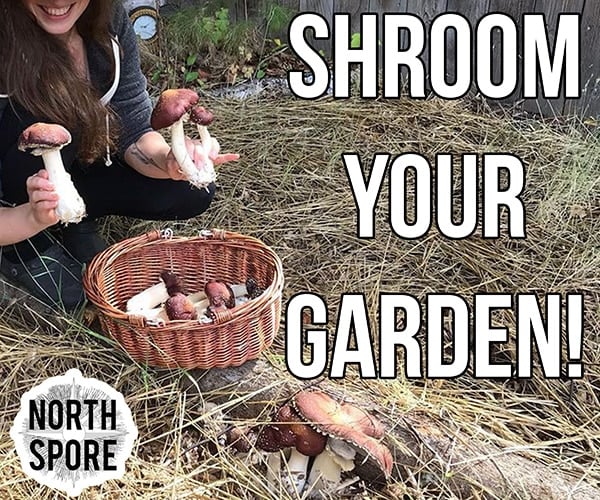
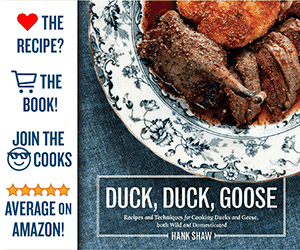
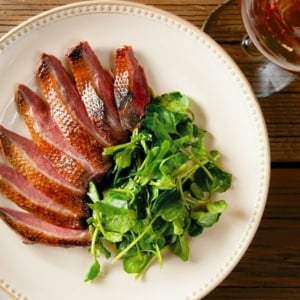
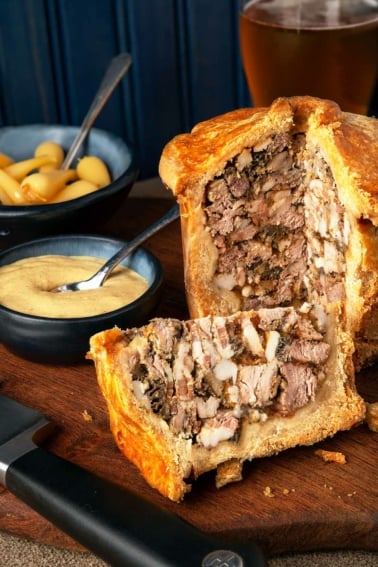
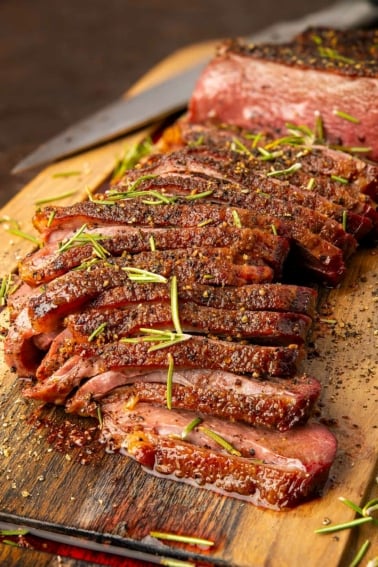
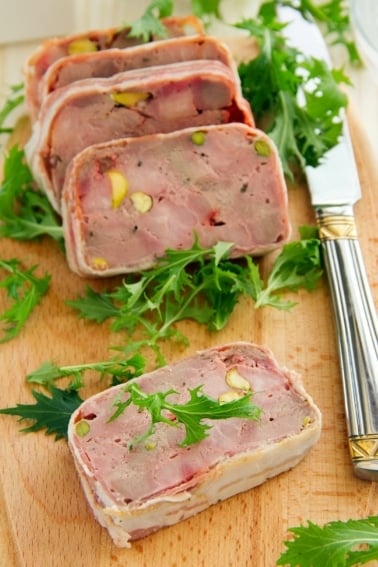
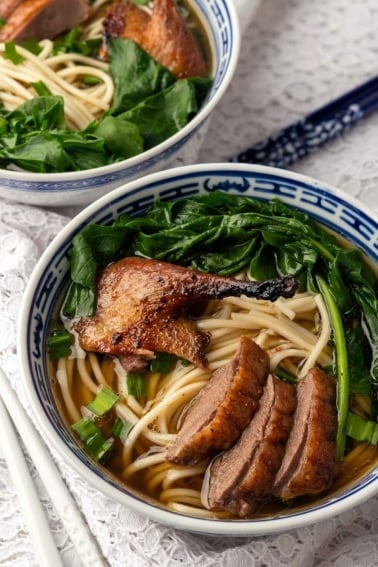
Hi Hank – looks like a great recipe, going to try it out. Two quick questions:
1. If I am going to be serving it cold a day or two later, when is the best time to carve? Straight after cooking + resting or just before serving?
2. My smoker is a little temperamental so times can vary quite a bit. What internal temperature should I be aiming for if serving as cold cuts?
I would carve it once it’s cold. As far as an internal temp goes, maybe 140F for breast meat?
Thank you!
When you dry the duck after brining then the surface is dry for the smoke to adhere to. When do you apply the maple syrup ? Surely if you do this as you place it in the smoker there is no dry surface for the smoke to adhere to anymore? Do you start applying after a few hours in the smoker ?. I am planning to do the lower temperature route you describe for smoking. 200-225 F.
Russell: You don’t want it dry per se, you want it sticky tacky. And yes, you don’t apply the maple syrup until you are an hour in or so.
Hi Hank, this looks amazing. Going to try it this weekend. You mentioned that the skin needs to be dry before you smoke the bird but then say paint with maple syrup. Am I right in saying that you let the bird dry after brining then paint with maple syrup then let that dry before smoking?
Thanks Hank
Adam: Yes, exactly.
You just told one person to baste the dry duck with maple syrup after it’s been in the smoker for an hour. Then you told the next person to bast it with maple syrup, let it dry, then put in the smoker. So which is it?
Jared: The latter. The recipe is more than a decade old, and I have been making it constantly since then, so it has evolved with my tastes. Sorry for the confusion.
I made this last night on my new Traeger smokers. I brined the duck for 2 days, salted it as directed, boiled my maple syrup down to 50%, and applied the maple syrup and salt. I smoked for 3 hours at 275 and 30 mins at 450. It was my first time making duck and it was better than any duck I’ve ever had during my world travels. My wife felt the same way. Thanks, Hank!
I’m a little afraid to try basting the skin with maple syrup and doing the higher temp cook as the syrup may burn. Thoughts?
Douglas: The syrup won’t burn in the smoker, but if you have a lot of it on the skin and you then sear it, yes, it can. If you want to get the same effect with a pre-smoked, seared duck breast, drizzle a little syrup in the pan after the duck is ready, mixing it with the duck fat in the pan, and then pour that over the finished duck breast.
I am saving my rating until after I lovingly prepare this. Getting my Ducks in a row ( no pun intended, well maybe a little), I need to ask.
You say take the fat from inside the cavity and neck of a domestic bird and save it for later. (can you give me a hint as to what I would be using this fat for?).
Use it for roasting you potatoes
Hank,
Love your book! My wife wants me to replicate a smoked duck we get from a local Taiwanese restaurant. Very little fat is rendered from the duck, and it is served cold. The skin on the duck is quite pale, with no evidence of burning or crisping. The flavor is salty and mildly smoky, with perhaps a few other aromatics mixed in.
Most folks, including myself, are usually after that beautiful golden brown duck with the crispy skin. But this time it’s different and I would love your comments and thoughts about my plan.
I plan to brine the duck over night (12-18 hours) in the refrigerator using your brine recipe (1/4 cup kosher salt, 4 cups water, 1 teaspoon Insta Cure #1). I will try to dry it as best as possible for about 4 hours prior to smoking. I’m thinking of a low temperature smoke, around 180 °F, until the breast temperature reaches around 165 °F. I’m guessing this will take around 8-10 hours or so. I’ll then refrigerate and serve cold. Thoughts?
Hi,
Thanks, but this technique didn’t work too well for me. It took forever for my smoker to come down from 500 to 250. I think if I do this again, I’ll crisp it up in the oven, then transfer to a smoker running at 250.
Sam
Sam: You did it backwards. You smoke first, then crisp.
Easy and yummy!!
Do you need a drip pan when using a Traeger Grill? The drip tray is under the the grate and at an angle.
Bill Walker: Yep, I use one. I fashion one from foil.
This is my absolute favorite thing to do with my ducks that aren’t shot up too bad. It is great hot for dinner and sliced for sandwiches. The salty/savory/sweet/smoky flavor combination is as good as it sounds. Thanks for the great recipe!
We smoked 2 small green heads (mallards) that my son brought back from his hunt in Kansas…we brined and did a lovely maple glaze…they did not stay on the smoker 2 hours and were tough and had zero taste. I believe he salt water soaked them, then made a brine…did we do much soaking/bringing? They were beautiful but tasted?.
Jennifer: Weird. Yes, you cannot salt them twice or it will make them salty and tasteless. As for tough, the key is to monitor the temperature of the breast meat, and pull the birds when it hits 140F or even 135F. The rest of the bird will be tough. I use it for a soup base.
Hank, a couple of related questions. First, does a farm raised commercial bird need brining or just go the the topical salting? Second, if the wings and legs get tough when smoking the whole bird, does it work to cut the bird up, smoke and monitor the pieces’ temps and remover when they get to ±135°?
Thanks
David: You can if you want. I just use the legs and wings for that soup. As for brining, you do need it if you want to cure the bird a la a ham. If you are just smoking it to eat that night, no need. Just regular salt is fine.
This sure was a helpful write up, thank you. I appreciate the times and smoker temps, but I think the meat temp is the key thing… Can you provide the guidelines you’ve used in your experience? I’m thinking about cooking to an internal temp of 145F and tenting for 30 mins to get a final of maybe 150F. Thanks.
Would you brine if the duck is already in a salt/sodium chloride solution? Worried about too salty
Joshua: No I would not.
You say to salt the duck inside and out. Even if I brined it? No pepper?
Larry: The recipe card is for the quick version of smoked duck. The brined version is in the text. It all depends on what you want. If you brine, no extra salt, and no pepper — but if you want to add pepper, that’s OK.
Can I serve this hot? Or do I need to adjust the temp/time? Thanks
Shawn: You can serve it hot.
Hank,
I plan to smoke 8 lbs ( bone in) of Canda’s , breasts and legs. am following your Goose pastrami recipe — for breasts only . I think legs won’t make good pastrami and slicing is a chore.
Q. My bresats are bone in – I’m reding your smoke time , ~ 3 hours – , so ia ssume that’s fpr Boneless???
Thanks
Yves
Yves: Yes, I use boneless goose breasts.
When smoking on low temp (200-225) – What internal temp do you go for with a whole – skin on – wild mallard? Thanks
Travis: About 140F.
w/ maple syrup then hit it with 5 spice powder but, I did have to grill it a lttle to crisp up the skin a bit like you said
hey hank I made this amazing and like you said be creative first I smeared[hey im from new York we smear]
Great article! Do I need to salt if I use the brine?
Steven. Salt is the brine.